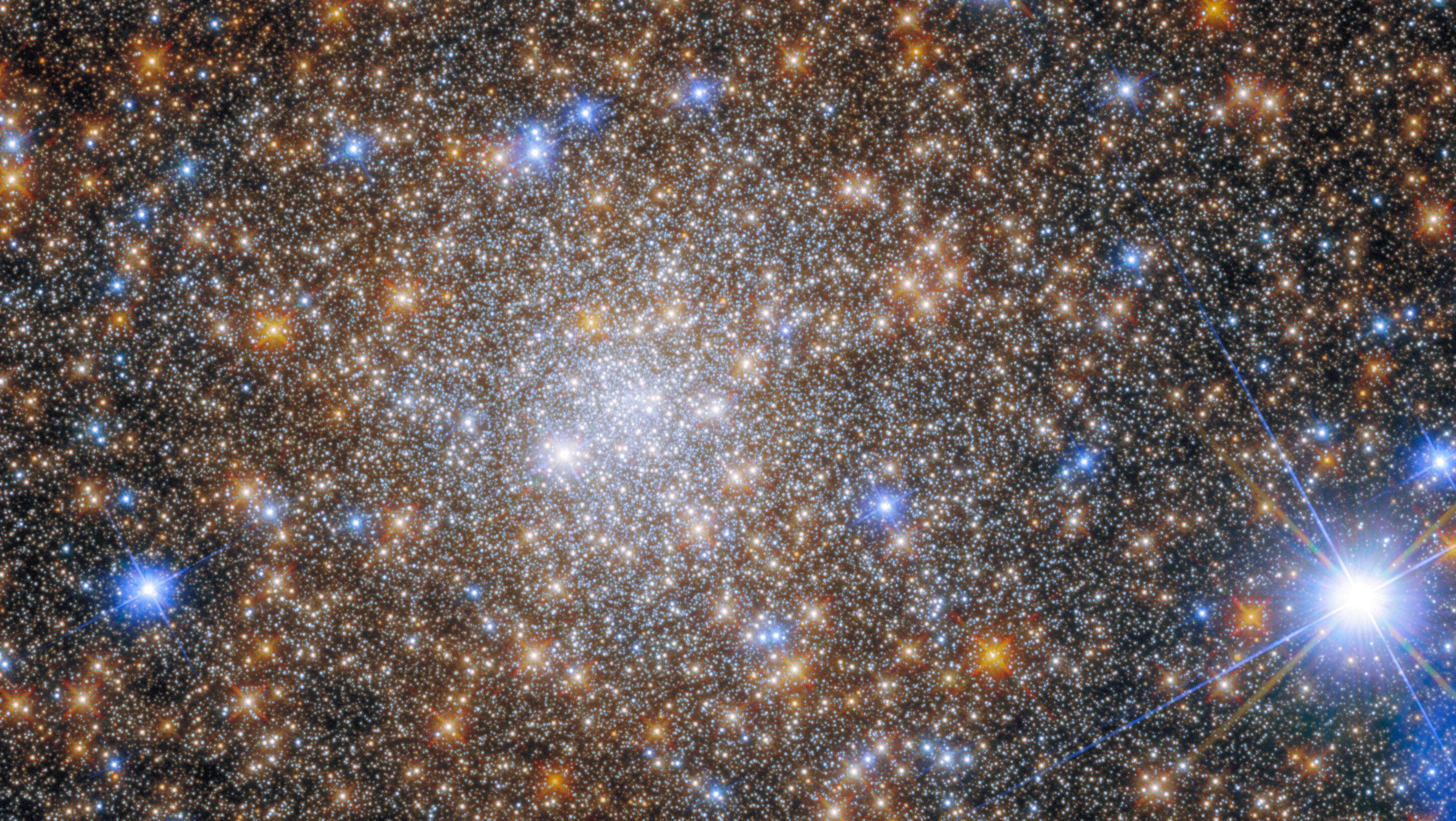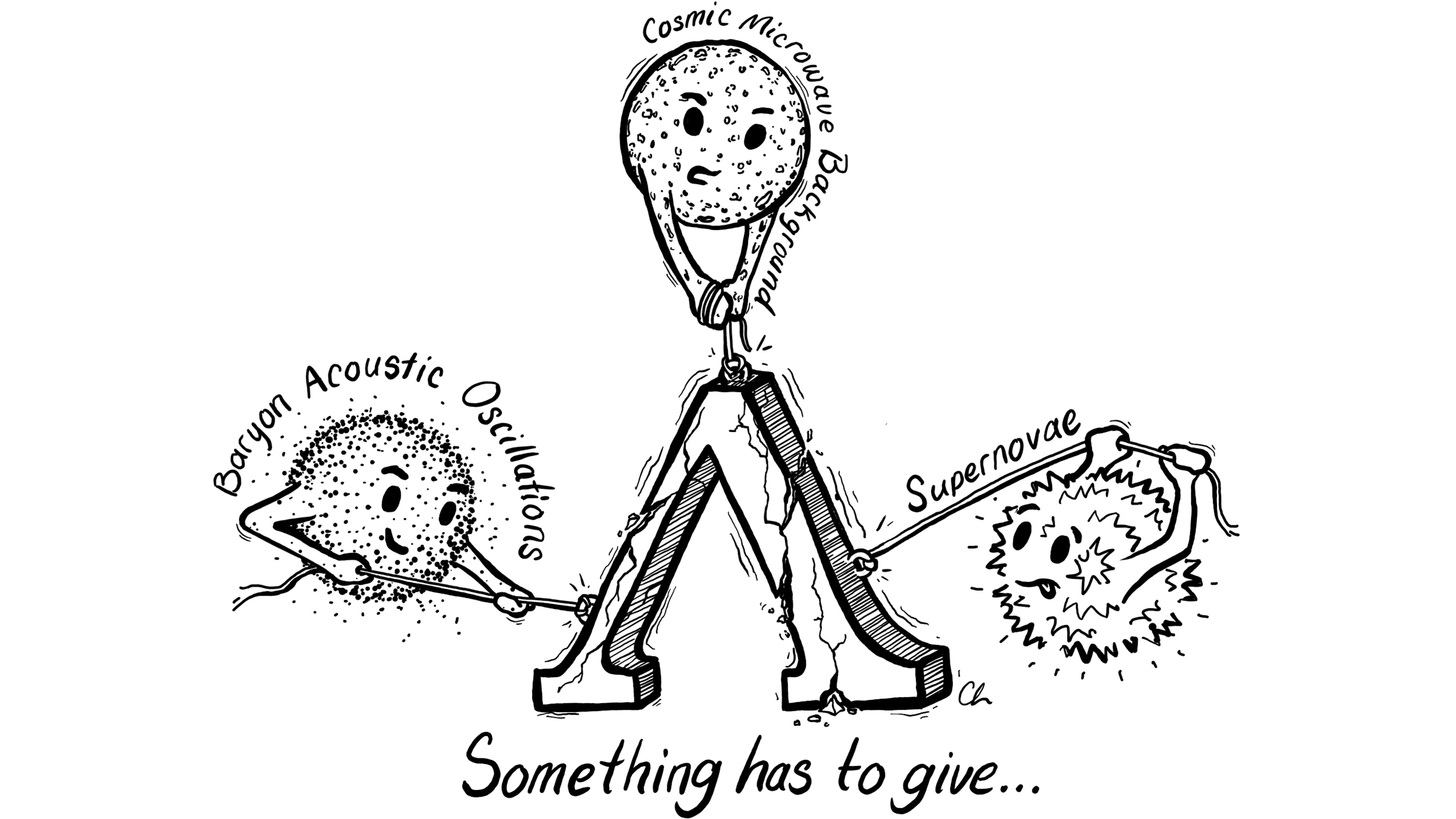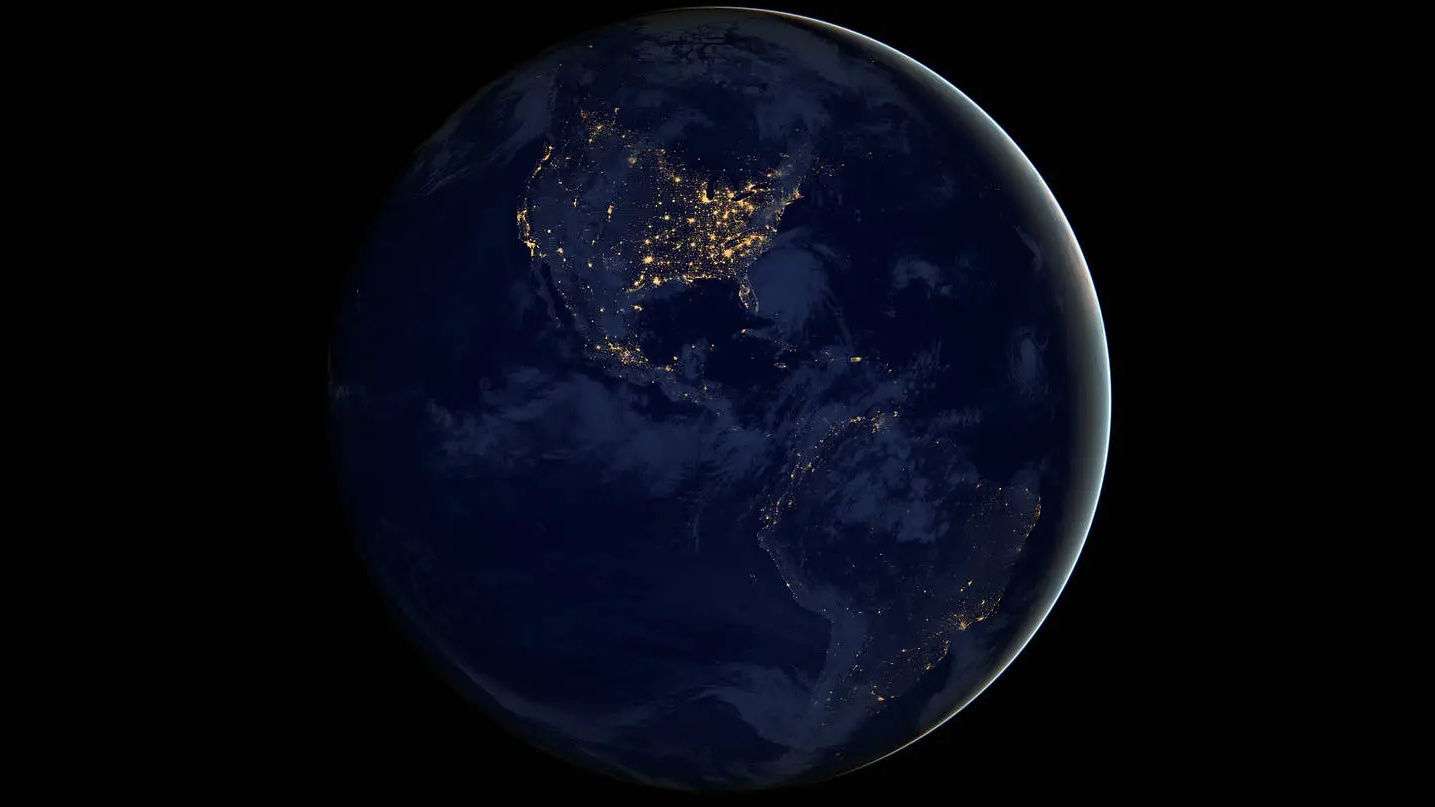How did the Universe get its first supermassive black holes?

How they get so big so fast is a mystery. Could “direct collapse” be the solution we’re seeking?
“For something to collapse, not all systems have to shut down. In most cases, just one system is enough.” –Robert Kiyosaki
At the center of almost every large galaxy lies a supermassive black hole, millions or even billions of times the mass of our Sun in scale. Our Universe has been around for 13.8 billion years, which you might think is plenty of time to form a black hole that large. Yet the farther and farther back in time we look, every supermassive black hole we measure seems to have roughly the same mass as the ones today. In other words, while the largest-scale structures in the Universe:
- giant elliptical galaxies,
- ultra-massive clusters with thousands of times the mass of the Milky Way,
- and galactic filaments that are hundreds of millions of light years across,
took billions of years to form, there are ultra-massive black holes that have been around as far back as we can see.
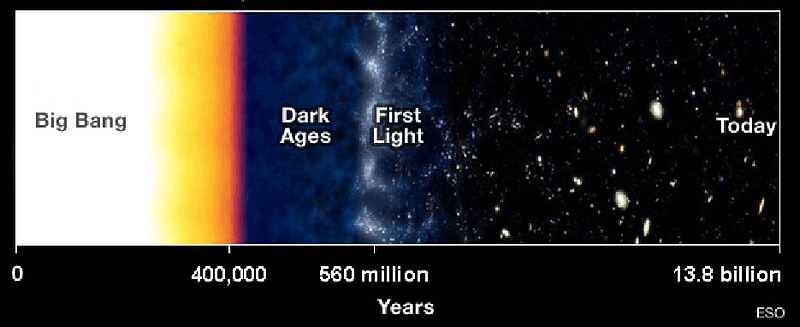
They don’t predate stars, but they are found in the earliest massive galaxies we know how to measure. The crazy explanation is that the Universe was born with these cosmic behemoths, but that flies in the face of everything else we know about structure formation, including the magnitudes and mass/size scales of the fluctuations that gave rise to everything we see today. The new physics that would have to be hypothesized to create a Universe that was born with extremely large black holes is not only preposterous, it’s incredibly constrained by observations of the cosmic background light populating the cosmos.
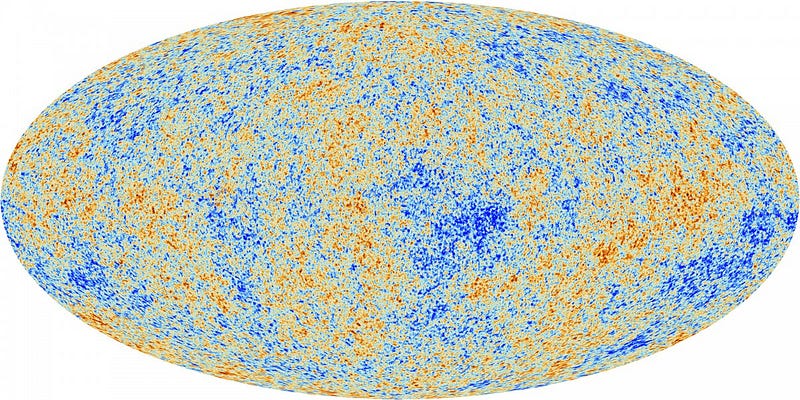
But there are two “mundane” explanations, or explanations that don’t involve any new fundamental physics beyond that which we currently know.
- A huge set of starbursts — a giant rush of catastrophic star-formation — triggered the formation of a great many stellar-mass black holes in just a few million years. Over time, they merged together and migrated towards the center of the galaxy, giving rise to a supermassive black hole in very short order.
- A supermassive black hole formed by direct collapse of matter into a very large, massive black hole all at once, providing the seed for ultramassive black holes to grow over a relatively short timescale.
The first scenario, by a great many people, is thought to be the simplest explanation, since we see plenty of evidence of how this could work, even today.
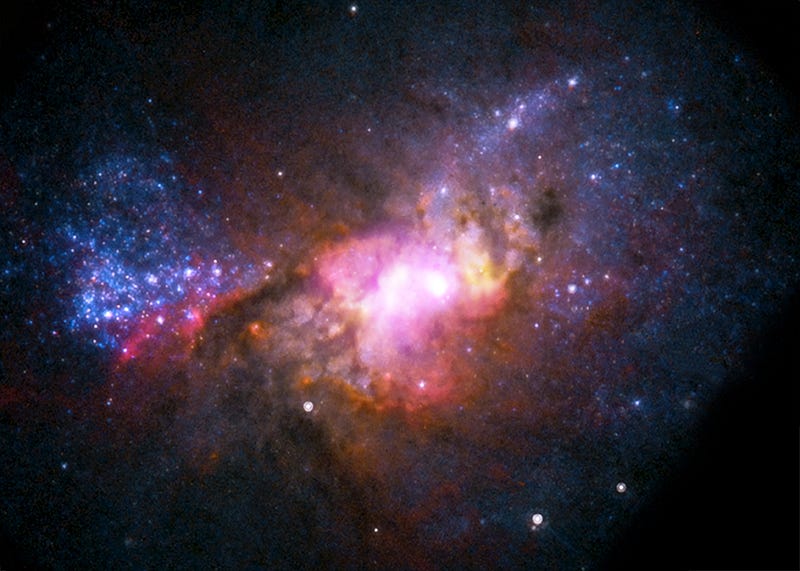
Star formation is known to occur in bursts, with the greatest rates of star formation occurring in the first three billion years of the Universe, and falling ever since. When stars form en masse, they produce stars of all different masses and colors, including copious numbers of stars over 20, 50, 100 or even 200 solar masses. These massive, blue, hot stars are both the brightest and the shortest lived, and they end their lives in core-collapse supernovae, almost all of which give rise to black holes. Because of the dynamics of gravity, the way these most massive objects work is that they interact with the other stars around them, kick them around while sinking to the center of a cluster-or-galaxy, and then merge together. It’s a simple, conservative scenario. But it might also be insufficient.
Last year, the galaxy CR7 was discovered: a strong candidate for having a truly pristine population of stars. Pristine means that this would be the very first time stars were forming inside this galaxy since the Big Bang, and the science supports this view quite strongly. Yet if we look at even this galaxy, we find something spectacular about it: it also exhibits evidence for a supermassive black hole. And while the starburst explanation is tempting, it may not line up completely with what we see. In a paper written earlier this year, scientists Aaron Smith, Volker Bromm and Abraham Loeb came up with a different explanation: perhaps they were seeing the first evidence for a direct-collapse black hole!
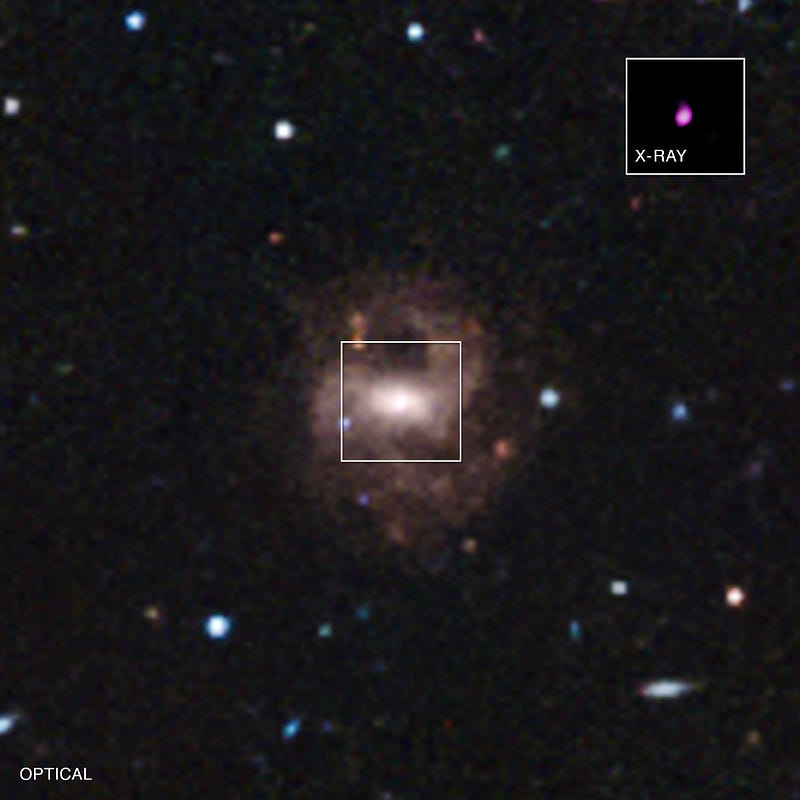
This galaxy, sending light from 13 billion years ago, has to see that light travel throughout the expanding Universe, where its wavelengths get stretched from ultraviolet through the visible portion of the spectrum and all the way into the infrared. Still, the hottest, bluest stars — which it’s rich in — cause intense ultraviolet emission from the atoms present: hydrogen and helium. These emission lines originate from slightly different parts of the galaxy, and thanks to the incredible technology of the 2015 observations detecting them, we were able to determine that the hydrogen emissions appear to be moving quickly, at 160 km/s, relative to the helium emissions. When Smith, Bromm and Loeb try to model these emissions using simulations, they find that a massive source of radiation must be present at the center, creating an ionized bubble and driving an expanding shell of gas out from the center.
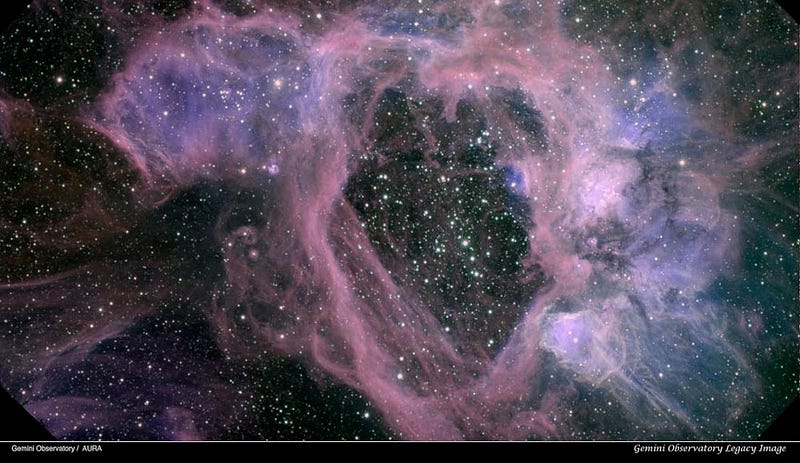
There are two explanations to consider: either there’s a massive star cluster at an incredibly high temperature of 100,000 K, or there’s a massive black hole driving it. The big difference between the two models is that the massive black hole produces the offset speed between the hydrogen and helium as well as the incredible size of the region (over 50,000 light years!) while the primordial massive star cluster does not.
These are simulations only, however; if you want to confirm your picture, you need evidence to decide one way or the other. The way we’ll be able to determine whether there truly is a massive black hole will be observational, and it will involve looking for the characteristic radio emissions from black holes.
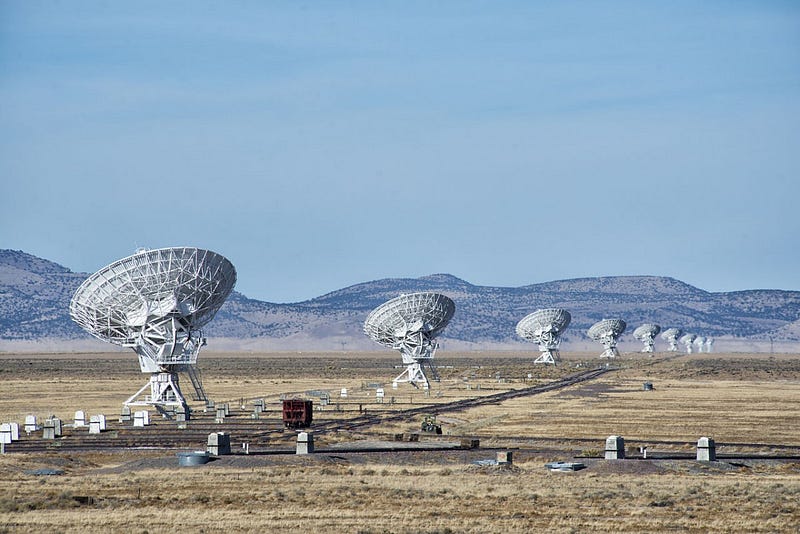
The largest, most advanced radio telescope arrays in the world are on the verge of being up to the task! The evidence pointing to the existence of direct-collapse black holes is tantalizing and suggestive, but we’re not over the threshold yet. In order to get there, we need to see the proof. But the theoretical possibility has been raised, and the gauntlet has been thrown down. It’s time to collect the evidence and let nature decide!
This post first appeared at Forbes, and is brought to you ad-free by our Patreon supporters. Comment on our forum, & buy our first book: Beyond The Galaxy!


